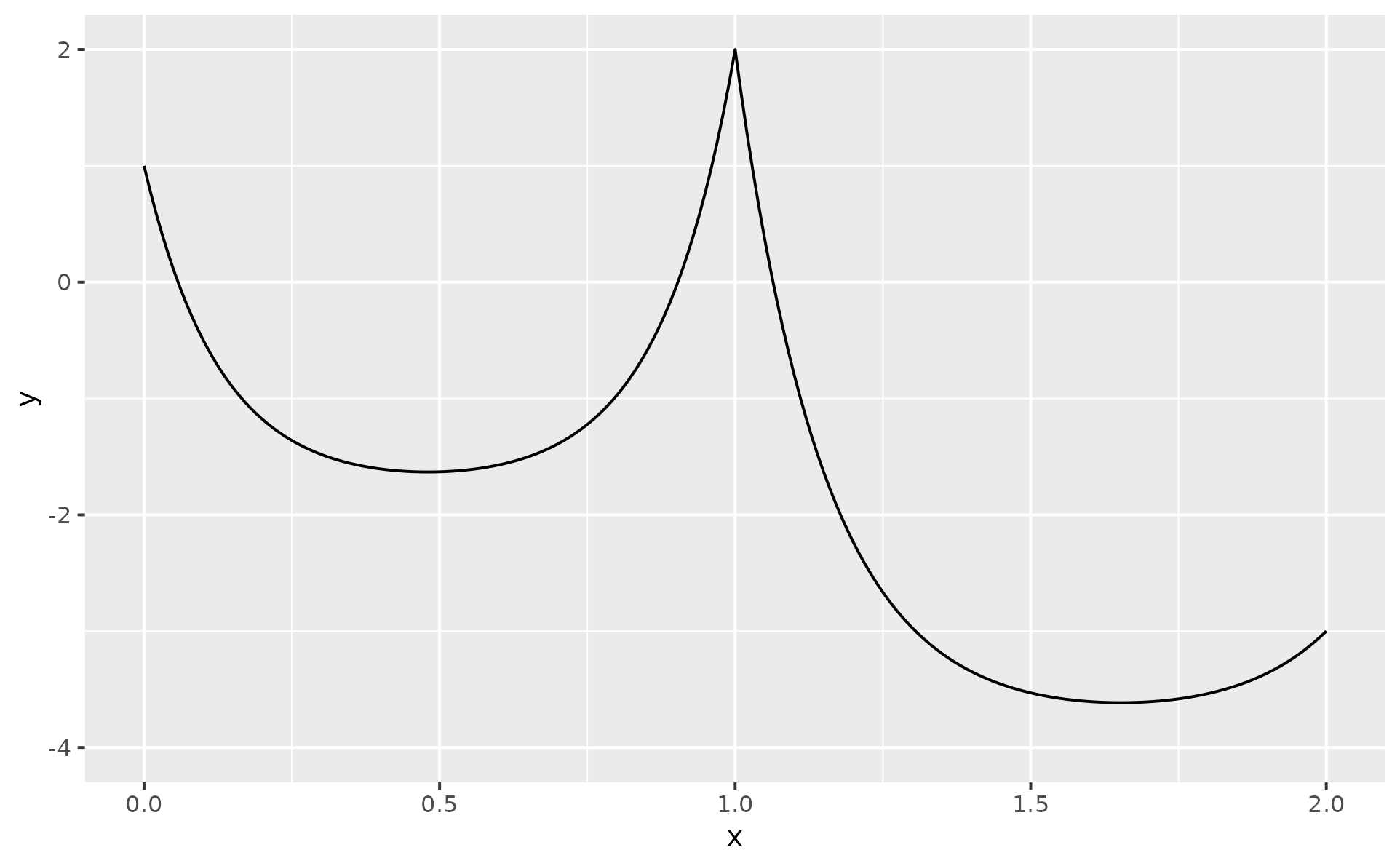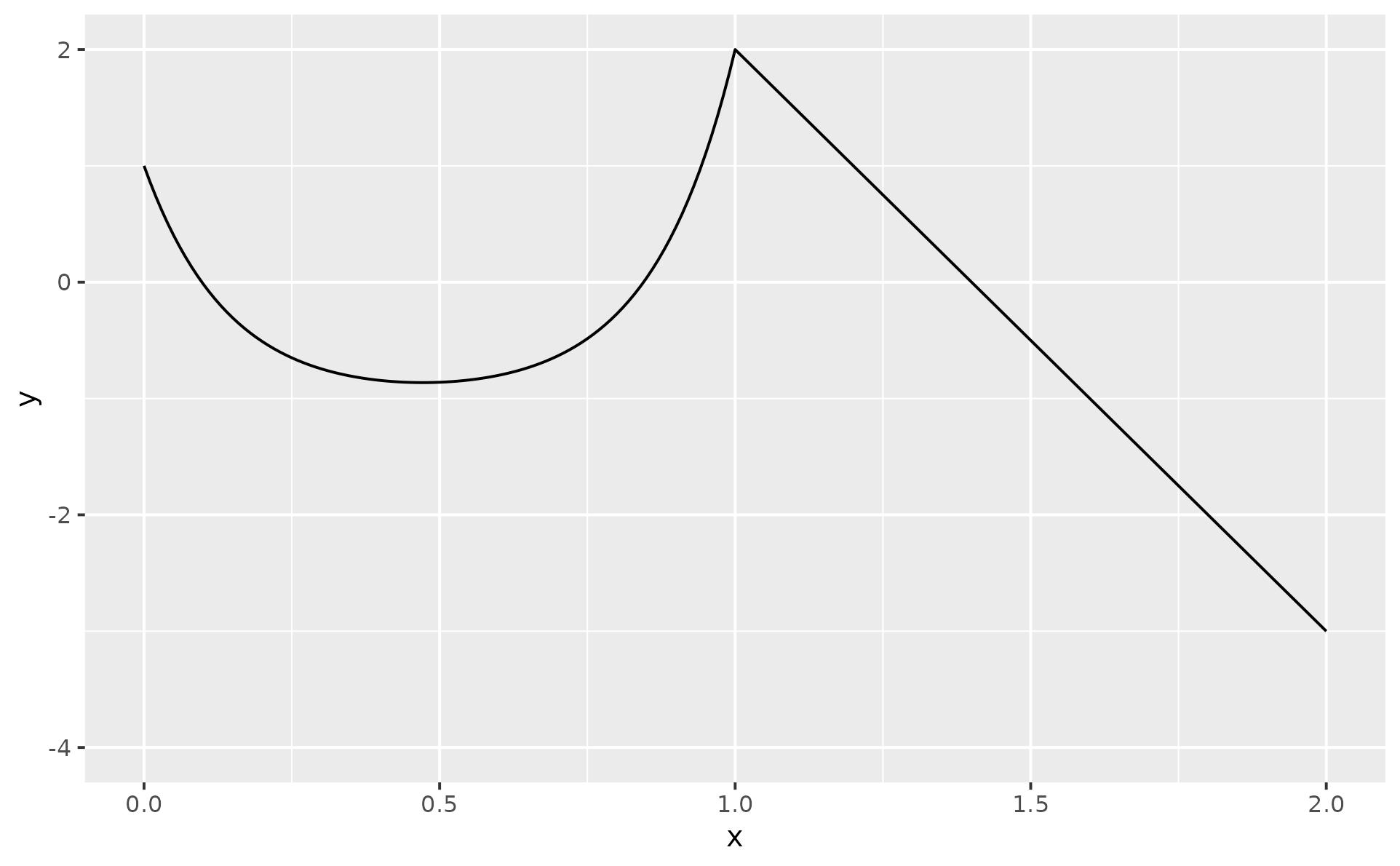geom_catenary() draws a catenary curve which has a U-like shape,
similar in appearance to a parabola, which it is not.
Usage
geom_catenary(
mapping = NULL,
data = NULL,
stat = "catenary",
position = "identity",
...,
chainLength = NULL,
show.legend = NA,
inherit.aes = TRUE,
na.rm = FALSE
)
stat_catenary(
mapping = NULL,
data = NULL,
geom = "path",
position = "identity",
na.rm = FALSE,
show.legend = NA,
inherit.aes = TRUE,
chainLength = NULL,
...
)Arguments
- mapping
Set of aesthetic mappings created by
aes(). If specified andinherit.aes = TRUE(the default), it is combined with the default mapping at the top level of the plot. You must supplymappingif there is no plot mapping.- data
The data to be displayed in this layer. There are three options:
If
NULL, the default, the data is inherited from the plot data as specified in the call toggplot().A
data.frame, or other object, will override the plot data. All objects will be fortified to produce a data frame. Seefortify()for which variables will be created.A
functionwill be called with a single argument, the plot data. The return value must be adata.frame, and will be used as the layer data. Afunctioncan be created from aformula(e.g.~ head(.x, 10)).- position
Position adjustment, either as a string naming the adjustment (e.g.
"jitter"to useposition_jitter), or the result of a call to a position adjustment function. Use the latter if you need to change the settings of the adjustment.- ...
Other arguments passed on to
layer(). These are often aesthetics, used to set an aesthetic to a fixed value, likecolour = "red"orsize = 3. They may also be parameters to the paired geom/stat.- chainLength
Length of chain between two points.
- show.legend
logical. Should this layer be included in the legends?
NA, the default, includes if any aesthetics are mapped.FALSEnever includes, andTRUEalways includes. It can also be a named logical vector to finely select the aesthetics to display.- inherit.aes
If
FALSE, overrides the default aesthetics, rather than combining with them. This is most useful for helper functions that define both data and aesthetics and shouldn't inherit behaviour from the default plot specification, e.g.borders().- na.rm
If
FALSE, the default, missing values are removed with a warning. IfTRUE, missing values are silently removed.- geom, stat
Use to override the default connection between
geom_catenaryandstat_catenary.
Details
If a flexible chain or rope is loosely hung between two fixed points, it is a curve called a catenary. Catenary, from Latin word catēna, means "chain".
Aesthetics
geom_catenary() understands the following aesthetics (required
aesthetics are in bold):
x
y
alpha
color
group
linetype
linewidth
Examples
dat <- data.frame(
x = c(0, 1, 2),
y = c(1, 2, -3)
)
p <- ggplot(dat, aes(x, y))
p + geom_catenary() +
ylim(-4, NA)
#> Set chainLength to 13
 # use chainLength argument to change default behaviour
# if you pick a chain length that is too short, a straight line is
# drawn and a message about minimum chain length is shown
p + geom_catenary(chainLength = 10) +
ylim(-4, NA)
#> Minimum chain length from '(1, 2)' to '(2, -3)' is 5.1, drawing a straight line.
# use chainLength argument to change default behaviour
# if you pick a chain length that is too short, a straight line is
# drawn and a message about minimum chain length is shown
p + geom_catenary(chainLength = 10) +
ylim(-4, NA)
#> Minimum chain length from '(1, 2)' to '(2, -3)' is 5.1, drawing a straight line.

